Entire books have been written about the art of cultivating, identifying, asking, and nurturing a strong nonprofit board. While we can’t get into all the details here, we have the following suggestions for the process of shaping your nonprofit’s board into an effective force for good governance.
Find the “right” board member
Start with asking what does your nonprofit need to advance its mission right now and in the future? A board member with financial expertise? Connections in the community? Someone familiar with the individuals served by the nonprofit? Once you have identified the skills and experience your nonprofit needs, you’re ready to identify and recruit new board members. The recruitment process requires both “vetting” a candidate and “cultivating” the interest of a potential future board member until he or she is ready to accept an invitation to become an ambassador and advocate for the nonprofit. Some nonprofits find that asking potential board candidates to first serve on a committee or task force, or volunteer for the nonprofit in another way, is a good way for both nonprofit and potential board member to find a good fit.
It is more than just a “nominating committee”
“Nominating committee” implies that the only function is to nominate board members for election to the board, but that limits our vision of good governance. It’s helpful to have a task force or committee of the board authorized not only to identify new board prospects but also to focus on the effectiveness of the board. Serving on a charitable nonprofit’s board is about more than just being elected – it requires continuous learning about those served and being an advocate for the mission, making decisions that are in the best interest of the organization, ensuring prudent use of the nonprofit’s assets, and looking ahead to help the nonprofit plan for the future. All this requires “the vision thing,” which is bolstered by ongoing education and exposure to issues that affect the nonprofit’s operations – both its external and internal environments.
As the name “Governance Committee” suggests, the focus of what used to be called the “nominating committee” is now on effective board governance, and its role goes well beyond nominating. The committee tasked with keeping the board on track is usually also responsible for ensuring that the nonprofit has effective governance practices, that individual board members are engaged, and that the board as a whole is effectively fulfilling its obligations as a steward of the nonprofit’s assets, reputation, financial and human resources, and mission.
The ask
While it should be every board member’s job to be on the look-out for potential new board members, it’s best if the actual invitation to join a board is extended only by those current board members who have been specifically authorized to extend an invitation to a new board member. This usually happens after the committee charged with the task has reviewed a list of potential prospects, met with or spoken with several candidates, and decided not only who should be asked, but also determined who the best person to make the ask will be.
- Thoughtful comments on the process of recruiting new board members, and the downsides of making an “ask” prematurely, are shared in this article, Speed Up The Board Recruitment Process (Blue Avocado).
Need help finding the right board member?
Contact your state association of nonprofits, local United Way, or local community foundation, because they may know about board-match programs in your area. You may also want to explore Volunteer Match, and LinkedIn for nonprofits.
PRACTICE POINTERS
- Start with an assessment of the skills, experience, and expertise of your existing board so you can identify gaps. Whether using a full self-assessment of the board (McKinsey) or a short form “matrix,” beware of limiting your thinking. Ditch your board composition matrix(Blue Avocado)
- Consider using a board application form that individuals can fill out to indicate their interest in serving on the board or a board member “contract” (Blue Avocado)
- Once you’ve found a terrific board member who says, “Yes!” get them started on the right foot with an orientation.
- Who asks often makes a difference in whether the candidate says, ‘Yes.’
- Some questions that a board governance committee might ask to assess the ongoing health and effectiveness of the board include:
- Is the board engaged? Are board members attending meetings? Is the board structured in a way that supports the work of staff and the needs of the organization? Do committees add value? Are the outcomes of meetings useful? Is there accountability? Why or why not?
- Consider using design thinking when planning board agendas, such as structuring the agenda around the nonprofit’s strategic priorities.
- How big is your board? Most governance gurus caution against boards larger than 13-17, because it’s so hard to keep all those board members engaged, and unwieldy during meetings making sure that all voices are heard. (Also it may be harder to reach a quorum with larger boards.) On the other side of the spectrum, very small boards are by definition limiting their perspectives and reach in the community. Nevertheless, each nonprofit needs to decide for itself what the right size is. What’s the right size for your board? (Blue Avocado)
- As you think about increasing the diversity of your board you may wonder whether bringing on younger board members, under the age of 18, is permissible? This will be controlled by the state law that governs nonprofit corporations in your state. If state law is silent and your nonprofit’s bylaws either allow minors to serve or are also silent, then it is acceptable to have minors on your nonprofit’s board as volunteers. However, in order to shield minors’ parents from the legal and fiduciary responsibilities of nonprofit board members, many charitable nonprofits choose to incorporate minors into the board’s governance structure through a “Youth Advisory Board” or similar structure. Also, be aware that one limitation on minors serving as officers of a nonprofit corporation is that a contract signed by a minor may not be valid or enforceable.



